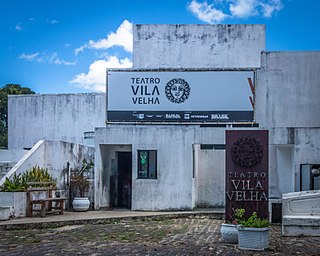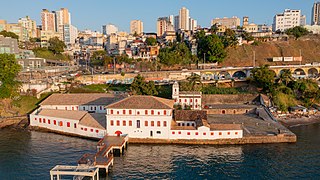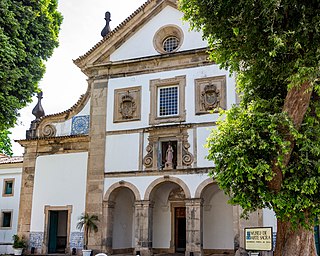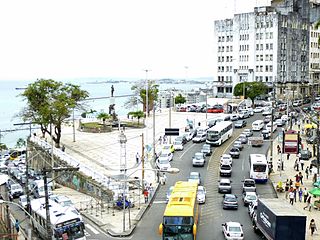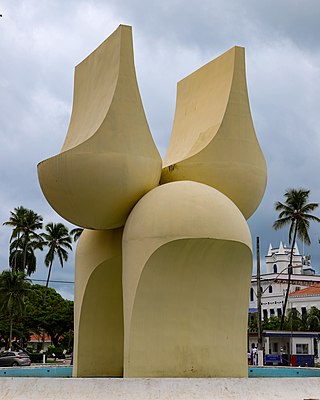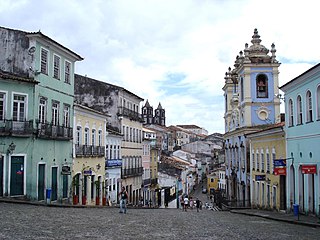Self-guided Sightseeing Tour #4 in Salvador, Brazil
Legend
Guided Free Walking Tours
Book free guided walking tours in Salvador.
Guided Sightseeing Tours
Book guided sightseeing tours and activities in Salvador.
Tour Facts
3.5 km
164 m
Experience Salvador in Brazil in a whole new way with our free self-guided sightseeing tour. This site not only offers you practical information and insider tips, but also a rich variety of activities and sights you shouldn't miss. Whether you love art and culture, want to explore historical sites or simply want to experience the vibrant atmosphere of a lively city - you'll find everything you need for your personal adventure here.
Activities in SalvadorIndividual Sights in SalvadorSight 1: Passeio Público
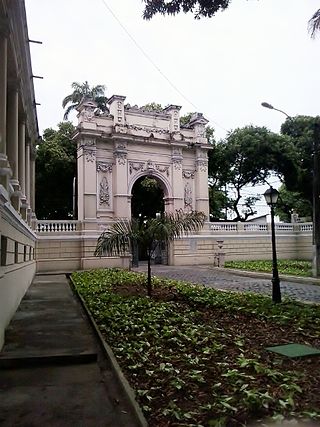
The Public Promenade of Salvador, Bahia, is located next to the Palace of Acclamation.
Sight 2: Teatro Vila velha
The Vila Velha Theater, also known simply as "Vila", is a performing arts center in Salvador, Bahia, Brazil. The theater was constructed in 1964 and is located on Avenida Sete, at the west of the 19th-century Neoclassical public area, the Passeio Público.
Sight 3: Museu de Arte Moderna da Bahia
The Museum of Modern Art of Bahia is a modern art museum located in Salvador, Bahia, Brazil. It is located within Solar do Unhão, a historical site dating to the 16th century, on the margin of the Bay of All Saints. The museum was founded in 1960 under the architect Lina Bo Bardi (1914-1992) and initially located in the foyer of the Castro Alves Theater; it moved to its present location in 1963. MAM-BA is one of twelve state museums linked to the Institute of Artistic and Cultural Heritage (IPAC), an authority of the Department of Culture of the State of Bahia.
Sight 4: Praça da Piedade
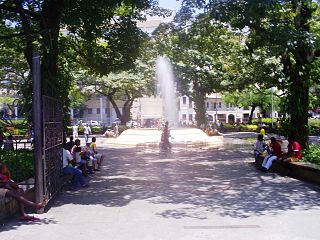
Praça da Piedade is located in the historic center of the city of Salvador, state of Bahia, Brazil.
Sight 5: Museu de Arte Sacra
The Museum of Sacred Art of the Federal University of Bahia is a museum of sacred art in Salvador, Bahia, Brazil.
Wikipedia: Museu de Arte Sacra (Universidade Federal da Bahia) (PT)
Sight 6: Praça Castro Alves
Castro Alves Square is a street located in the city of Salvador, capital of the Brazilian state of Bahia, located in the central part of the old urban center, in Cidade Alta.
Sight 7: Mario Cravo
The Monument to the City of Salvador, also known as Fonte da Rampa do Mercado, is a sculpture by Bahian artist Mário Cravo, installed in the Comércio neighborhood, in Salvador, on January 13, 1970. It is a listed monument, at the state level. It is located in Praça Visconde de Cairu, close to other iconic structures of the city, also listed, such as the Lacerda Elevator and the Mercado Modelo. It is also close to the headquarters of the 2nd Naval District and the Nautical Tourist Terminal of Bahia.
Sight 8: Praça Cairu
Maria Felipa Square, formerly known as Visconde de Cairu Square or Cairu Square, is a square located in Comércio, in the Lower City of Salvador, in the state of Bahia. It is home to the Mercado Modelo, the Monument to the City of Salvador and the lower station of the Lacerda Elevator, as well as the Bahia Nautical Terminal, bordering the Bay of All Saints and the Fort of São Marcelo in the background.
Sight 9: Historic Centre of Salvador de Bahia
The Historic Center (US) or Centre (UK) of Salvador de Bahia in Brazil, also known as the Pelourinho or Pelo, is a historic neighborhood in western Salvador, Bahia. It was the city's center during the Portuguese colonial period and was named for the whipping post in its central plaza where enslaved people from Africa were publicly beaten as punishment for alleged infractions. The Historic Center is extremely rich in historical monuments dating from the 17th through the 19th centuries.
Share
How likely are you to recommend us?
Disclaimer Please be aware of your surroundings and do not enter private property. We are not liable for any damages that occur during the tours.
GPX-Download For navigation apps and GPS devices you can download the tour as a GPX file.
